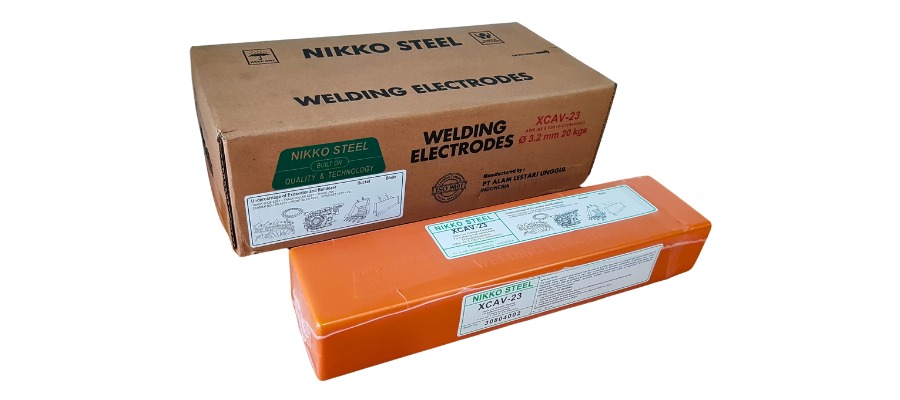BASIC LOW HYDROGEN ELECTRODE FOR SURFACING AND JOINING PARTS OF HEAVY EQUIPMENTS
XCAV-23

CLASSIFICATION
AWS A5.5 E8016-C3 (Nearest)
PRODUCT DESCRIPTION
The design emphasis of the chemically basic flux is engineered to ensure that the weld metal match for joining and hardness levels demanded by the specification are fully met without detracting from the toughness levels associated with this class of alloy. The basic flux containing the appropriate alloying elements and a balanced addition of iron powder is extruded onto a high purity ferritic core wire using a balance of silicates that ensures both coating strength and resistance to moisture absorption.
WELDING FEATURES OF THE ELECTRODE
The chemical nature of the flux allows very low amperages to be used on AC and DC+ and even DC- for controlled penetration. The arc is smooth and stable and the black viscous slag readily detachable, the resultant weld seams are bright and smooth. The electrode is designed solely for one sided vertical up welding and overhead welding and the very design features that make this possible will limit its use on other joint configuration. Electrode diameter and welding parameter influence the hardness.
APPLICATIONS AND MATERIALS TO BE WELDED
The tough crack resistant weld deposit may be used as a buffer layer both on mild and high carbon steels prior to depositing harder alloys. Used in its own right, it provides an excellent combination of abrasion and impact resistance making it ideal for surfacing and jaoining parts of heavy equipments e.g. undercarriage, gear wheels, rails, roller guides, slideways, track wheels, sprockets, buckets, blades and similar of excavators and bulldozers. The weld metal is fully machinable.
WELDING AMPERAGE AC and DC
OTHER DATA
Electrodes that have become damp should be re-dried at 150oC for 1 hour